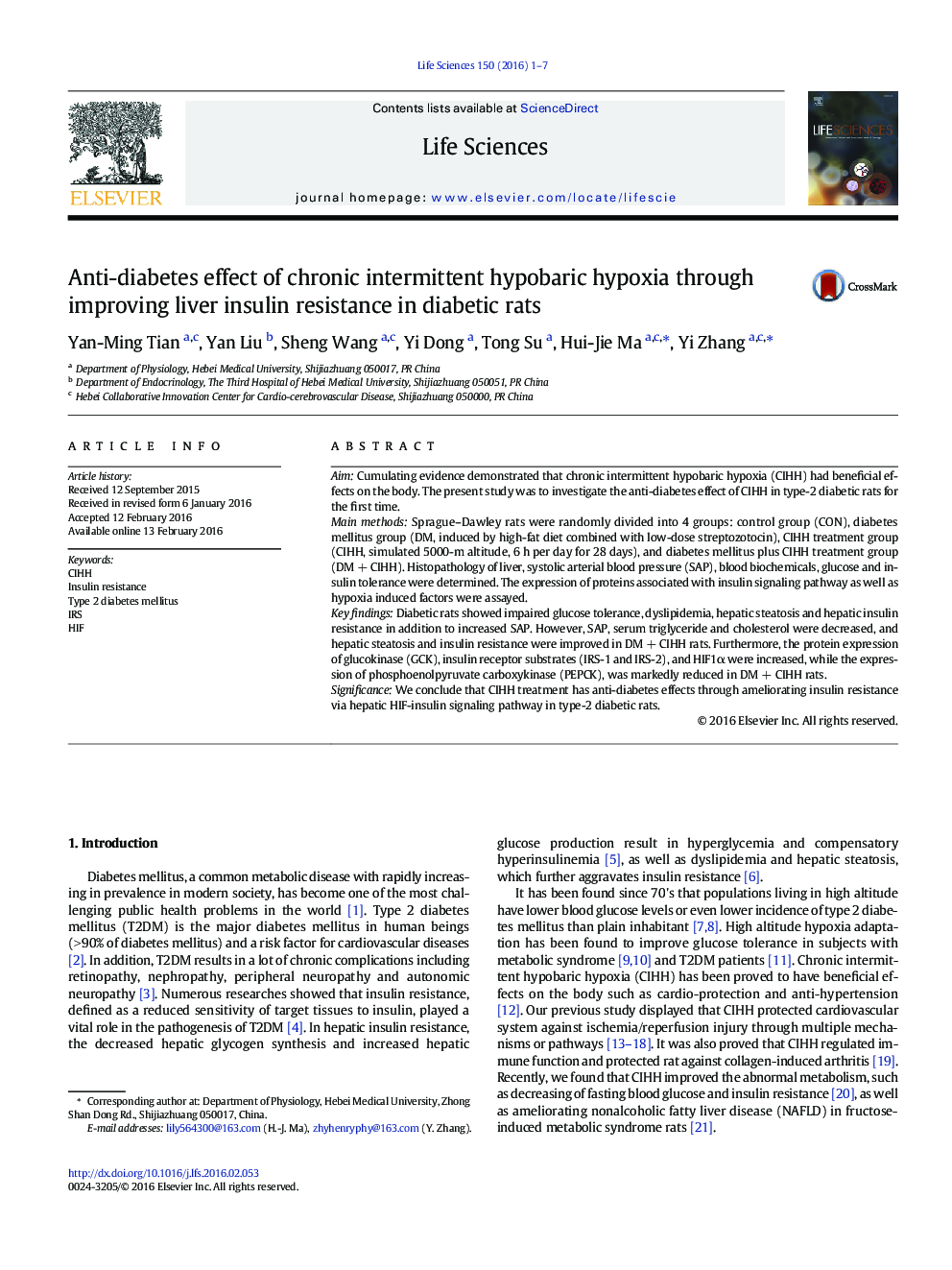| Article ID | Journal | Published Year | Pages | File Type |
|---|---|---|---|---|
| 2550466 | Life Sciences | 2016 | 7 Pages |
AimCumulating evidence demonstrated that chronic intermittent hypobaric hypoxia (CIHH) had beneficial effects on the body. The present study was to investigate the anti-diabetes effect of CIHH in type-2 diabetic rats for the first time.Main methodsSprague–Dawley rats were randomly divided into 4 groups: control group (CON), diabetes mellitus group (DM, induced by high-fat diet combined with low-dose streptozotocin), CIHH treatment group (CIHH, simulated 5000-m altitude, 6 h per day for 28 days), and diabetes mellitus plus CIHH treatment group (DM + CIHH). Histopathology of liver, systolic arterial blood pressure (SAP), blood biochemicals, glucose and insulin tolerance were determined. The expression of proteins associated with insulin signaling pathway as well as hypoxia induced factors were assayed.Key findingsDiabetic rats showed impaired glucose tolerance, dyslipidemia, hepatic steatosis and hepatic insulin resistance in addition to increased SAP. However, SAP, serum triglyceride and cholesterol were decreased, and hepatic steatosis and insulin resistance were improved in DM + CIHH rats. Furthermore, the protein expression of glucokinase (GCK), insulin receptor substrates (IRS-1 and IRS-2), and HIF1α were increased, while the expression of phosphoenolpyruvate carboxykinase (PEPCK), was markedly reduced in DM + CIHH rats.SignificanceWe conclude that CIHH treatment has anti-diabetes effects through ameliorating insulin resistance via hepatic HIF-insulin signaling pathway in type-2 diabetic rats.
